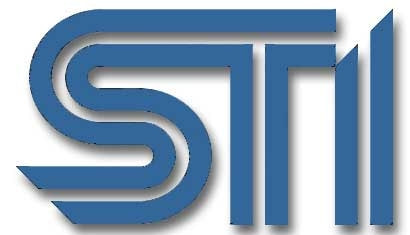The First Commercially Available Satellite Tracking Software
Available for Microcomputers - 1979 Colorado Springs
History of STI - SATTRAK International of Colorado Springs
In 1978 micro computers were just starting to be commercially available. Systems like the TRS-80 by Radio Shack and Apple II and Apple IIe cost about $2000 and were programmed in BASIC ( a real-time compiler) that you could change at any time and it would automatically recompile itself and RUN. This introduced computer programming to the masses and did away with punch cards and finicky compilers used on Mainframe computers like the IBM, PDP11-40 and others Now anyone could write their own code and make amazing things happen on a CRT (Cathode Ray Tube).
David Cooke, a Canadian RCAF Pilot attached to USAF Space Command as a Satellite Analyst and William N Barker, a mathematician and astrodynamicist working for the Cheyenne Mountain Complex as a contractor to the USAF began combining their skill sets and formed SATTRAK International in Dave's basement at 4300 Meandowview Ct Colorado Springs CO. It was "international" because it Bill was American and Dave was Canadian. simple as that. Bil had recentlly worked for Ford Aerospace as a software "plumber" working out the biases and accuracies of the existing NORAD satellite tracking code so he was quite familiar with the mathematical formulas and computer algorithms used for computing satellite orbits Dave had recently purchase a relatively unknown microcomputer called the Exidy Scorcerer.
The Exidy Sorcerer was ahead of it's time. it had a Fast Z-80 processor that ran at 1.1 "KILO" Hz and had 32 THOUSAND bytes of RAM with a ADDITIONAL 8k of BASIC program memory in a plug in ROM. It had 24 lines of 64 Characters for a display which if you look above here (LEFT) you can see was significantly better than the Apple II (RIGHT). Bill knew FORTRAN IV and Dave was rapidly learning BASIC in his spare time when they got talking about whether or not a mere Exidy could handle the complex calculations and formulas needed to track satellites. How would it measure up to the NORAD output.?
Bill started by mapping it out in pencil and translating the basic math into FORTRAN IV. They rented time on a commercial Burroughs 1800 mainframe computer in Colorado Springs and Bill ran a series of test runs to get the numbers to make sense. Bill was a stickler for precision and he'd learned the hard way to make sure the cards were punched accurately and the formulas were solid BEFORE spending money on expensive computers like the Burroughs. He was so skilled with punch cards I think his test algorithms ran the first time WITH NO ERRORS!!
Within a few months we had working code that produced computational results comparable to NORAD to 6 significant digits and we could do it in REAL TIME! with predictions of a satellite's position altitude and orbit for any time past present or future . . with look angles of AZ/EL/Range (RA/DEC/Range) from any position on earth. . . for any satellite in the catalog.
David Cooke, a Canadian RCAF Pilot attached to USAF Space Command as a Satellite Analyst and William N Barker, a mathematician and astrodynamicist working for the Cheyenne Mountain Complex as a contractor to the USAF began combining their skill sets and formed SATTRAK International in Dave's basement at 4300 Meandowview Ct Colorado Springs CO. It was "international" because it Bill was American and Dave was Canadian. simple as that. Bil had recentlly worked for Ford Aerospace as a software "plumber" working out the biases and accuracies of the existing NORAD satellite tracking code so he was quite familiar with the mathematical formulas and computer algorithms used for computing satellite orbits Dave had recently purchase a relatively unknown microcomputer called the Exidy Scorcerer.
The Exidy Sorcerer was ahead of it's time. it had a Fast Z-80 processor that ran at 1.1 "KILO" Hz and had 32 THOUSAND bytes of RAM with a ADDITIONAL 8k of BASIC program memory in a plug in ROM. It had 24 lines of 64 Characters for a display which if you look above here (LEFT) you can see was significantly better than the Apple II (RIGHT). Bill knew FORTRAN IV and Dave was rapidly learning BASIC in his spare time when they got talking about whether or not a mere Exidy could handle the complex calculations and formulas needed to track satellites. How would it measure up to the NORAD output.?
Bill started by mapping it out in pencil and translating the basic math into FORTRAN IV. They rented time on a commercial Burroughs 1800 mainframe computer in Colorado Springs and Bill ran a series of test runs to get the numbers to make sense. Bill was a stickler for precision and he'd learned the hard way to make sure the cards were punched accurately and the formulas were solid BEFORE spending money on expensive computers like the Burroughs. He was so skilled with punch cards I think his test algorithms ran the first time WITH NO ERRORS!!
Within a few months we had working code that produced computational results comparable to NORAD to 6 significant digits and we could do it in REAL TIME! with predictions of a satellite's position altitude and orbit for any time past present or future . . with look angles of AZ/EL/Range (RA/DEC/Range) from any position on earth. . . for any satellite in the catalog.
Proudly powered by Weebly
